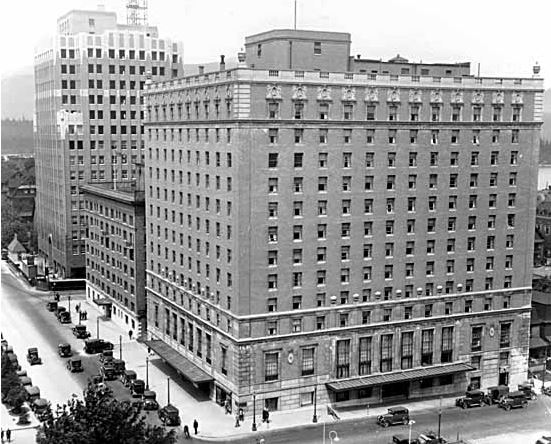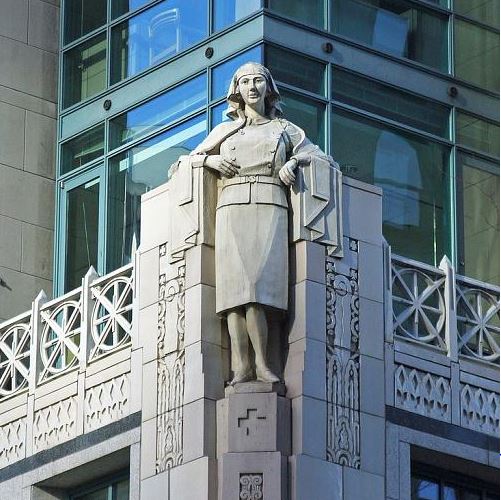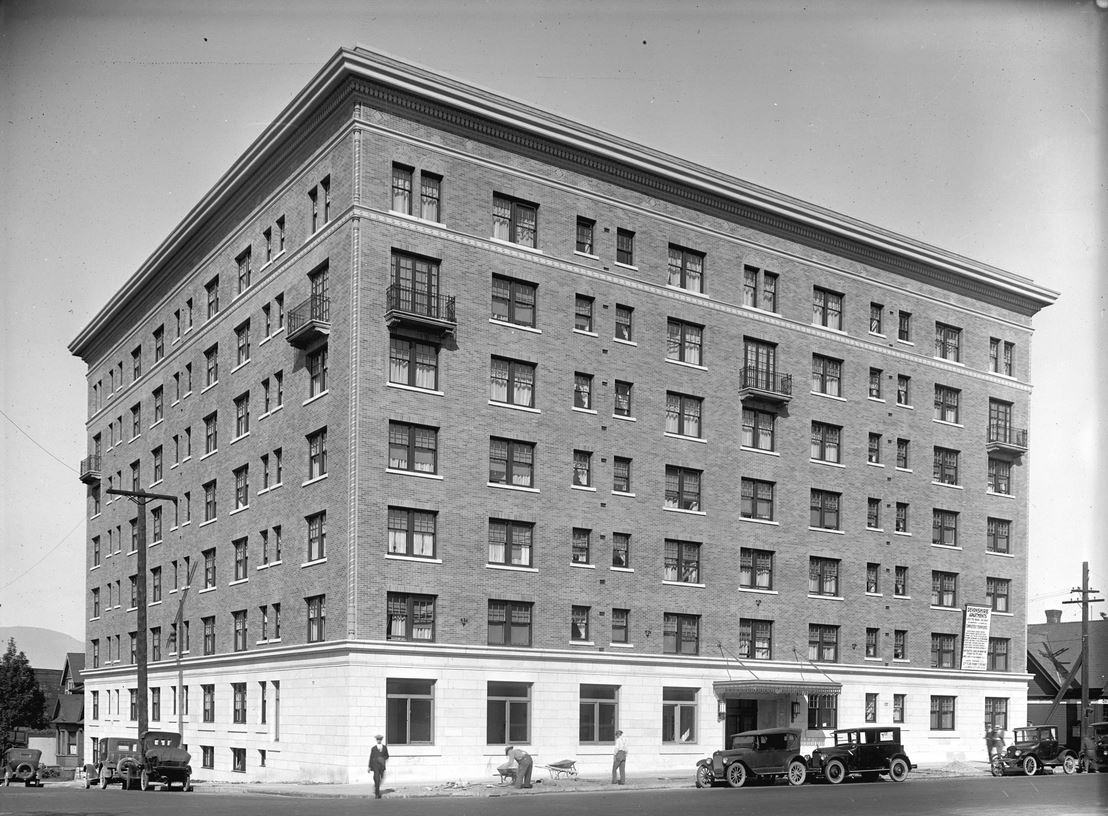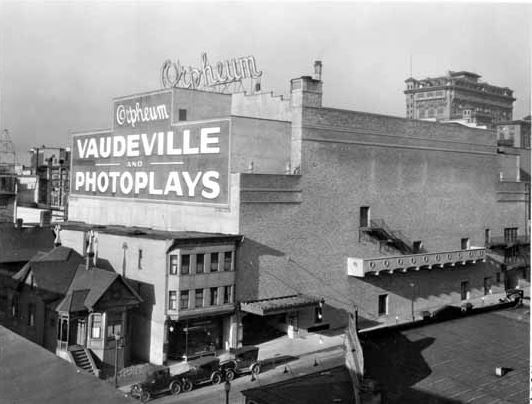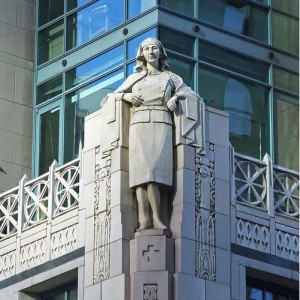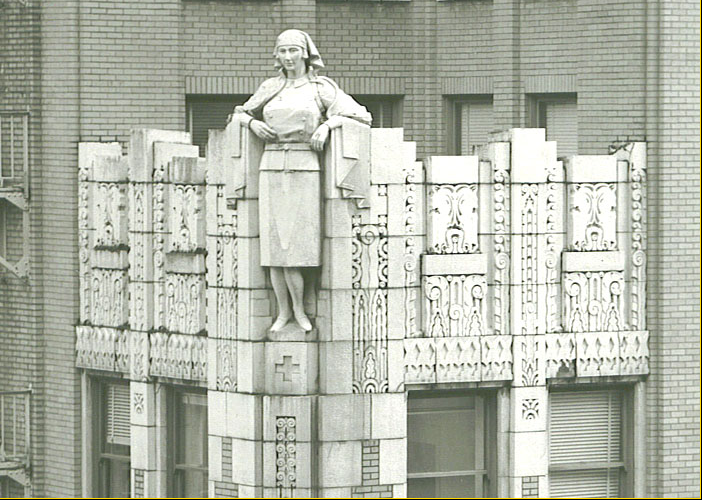
From Vancouver Exposed: Searching for the City’s Hidden History
I was driving along Hastings the other day when I saw a huge statue in the yard of Ital Decor in Burnaby. It looked suspiciously like one of the WW1 nurses that guarded the 10th floor of the Georgia Medical-Dental Building before it was imploded in 1989.
Mario Tinucci of Ital Décor, says the one in his yard is a fibreglass version that he cast from an original nurse, and made in 1990. It was the first of four that were replicated—the other three are attached to Cathedral Place, the Paul Merrick-designed tower that replaced the GM-DB.
The three “Sisters of Mercy” were affectionately known as the Rhea Sisters—Gono, Pyor and Dia.
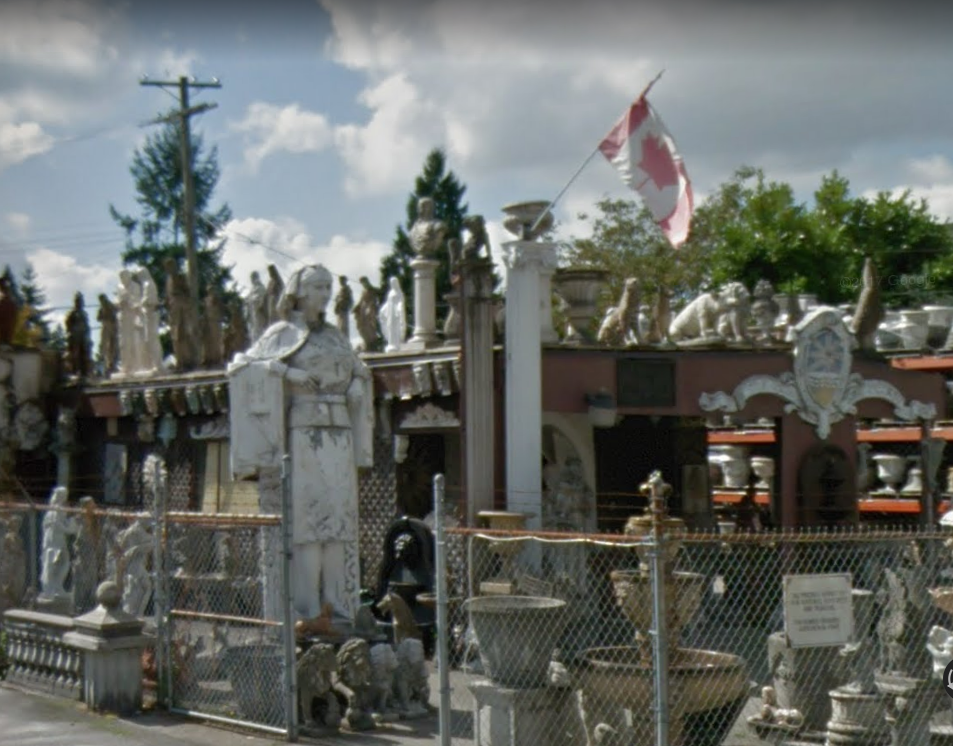
According to newspaper articles, the eleven-foot-high terra cotta nurses, designed by Joseph Francis Watson, weighed several tonnes each and were in rough shape when they came down. The cost to fix them was upwards of $70,000 each.
Instead, developer Ron Shon donated all three to the Vancouver Heritage Foundation. He also donated some of the terra cotta animals, spandrel panels and chevron mouldings from the main entrance, and the secondary arch (the main one is in the Bill Reid Gallery which is currently closed for renovations).
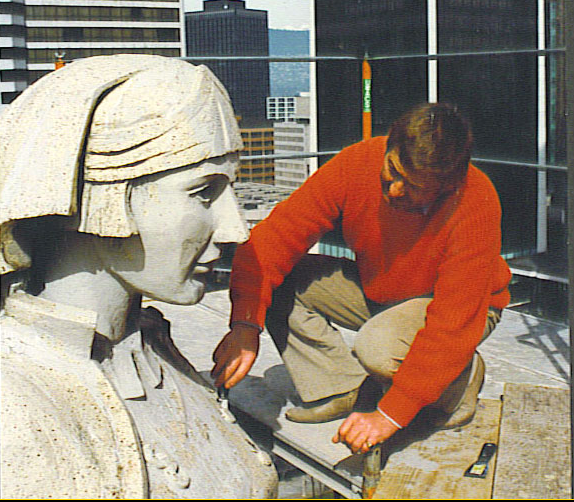
In 1992, the VHF had their first fundraiser at the Museum of Vancouver’s parking lot and sold off pieces of the GM-DB’s terra cotta.
Maurice Guibord, who was manager of community affairs for the MoV, paid $100 for a piece of the archway, now in his garden, and which came with Certificate of Authenticity #92.
The VHF donated one of the nurses to the MoV in 2000, and later sold the two original nurses to Discovery Parks at UBC.

Wendy Nichols, curator of collections at the MoV, says their nurse is at UBC on a long-term loan agreement. I’m told all three original nurses are attached to the Technology Enterprise Facility 111 building completed in 2003, although only two are visible in this photo.
I never saw the GM-DB, and neither did Maurice, but on Thursday he, Tom Carter and I took a field trip to Cathedral Place. Tom prefers Cathedral Place to the original art deco building because he says the back was unfinished, and the building was only ever designed to be viewed from the front.
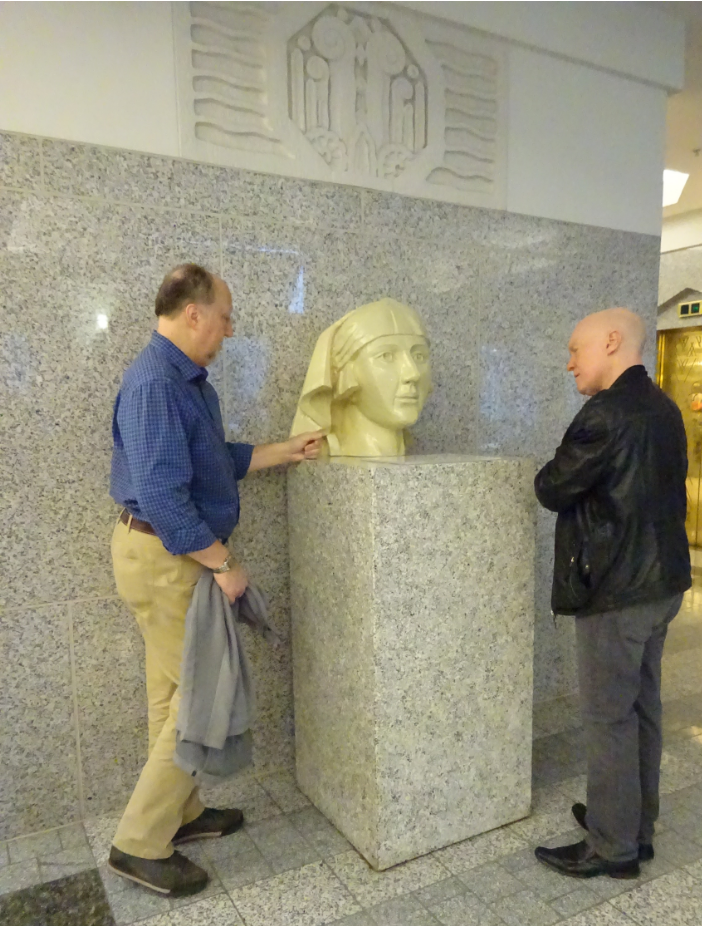
Robin Ward described the GM-DB’s “Mayan/Hollywood style lobby” in 1988. “It’s like a film set for a bank robbery in Mexico City,” he wrote.
I get what he means. The lobby in Cathedral Place is very similar to the Marine Building complete with brass doors on the elevators. (The Marine Building and the GM-DB were both designed by McCarter and Nairne architects).
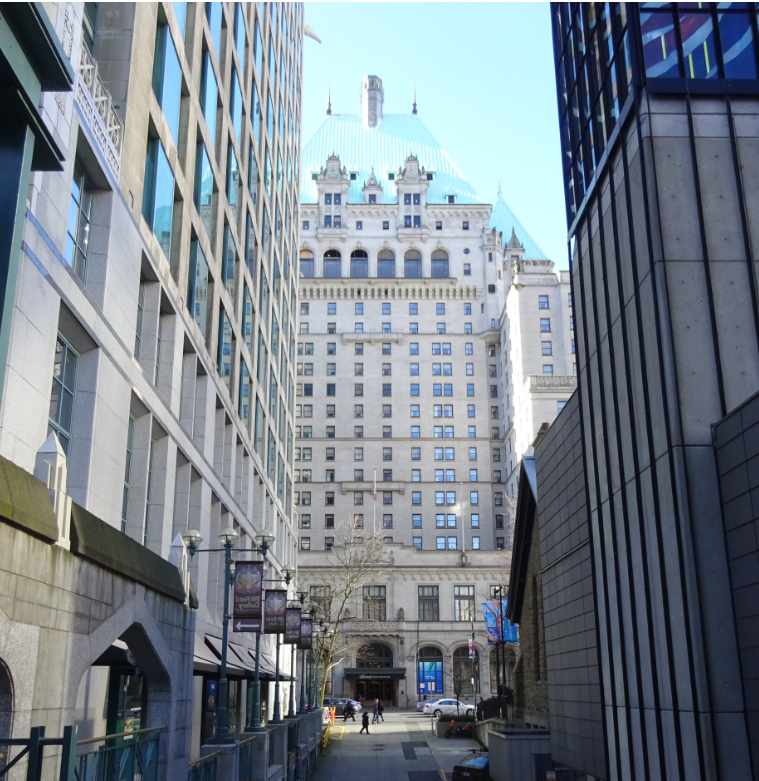
It’s easy to appreciate Merrick’s skill when you get into the monastery-like courtyard that joins Cathedral Place to Christ Church Cathedral and the Bill Reid Gallery. He has used a similar CP Hotel-style roof to complement the Hotel Vancouver’s copper lid, and gothic touches and cloisters to connect the buildings together.
Now the questions remain:
-
- Is the head that is displayed at Cathedral Place terra cotta or fibreglass (we couldn’t tell) and where did it come from? (There were three original nurses that are now at UBC and four fibreglass moulds—three are attached to Cathedral Place and one is at Ital Décor)
- What is the connection between the Technology Enterprise Facility Building and BC’s nursing history?
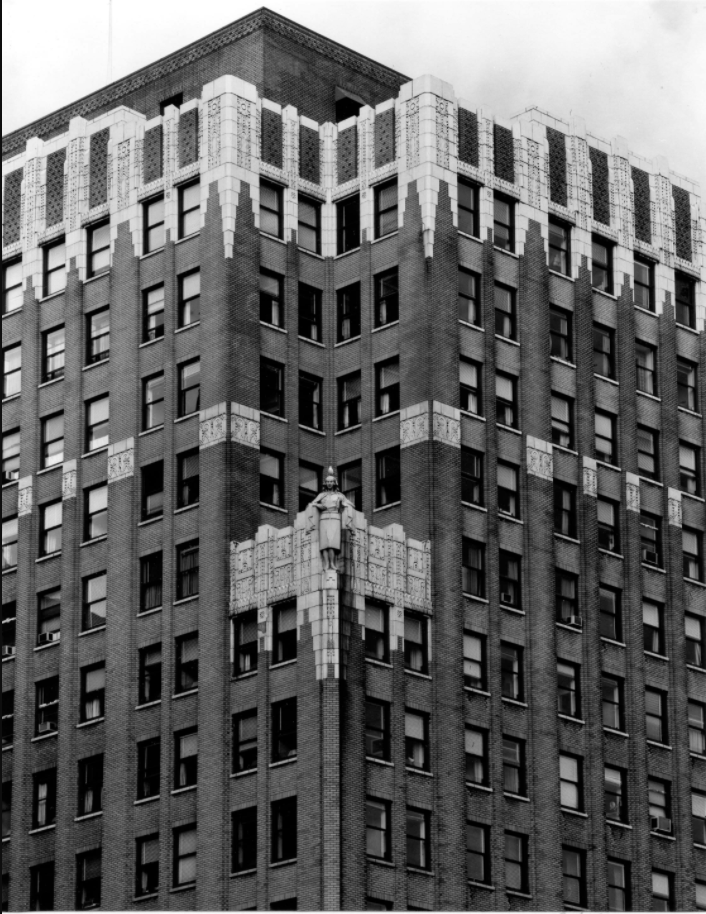
© All rights reserved. Unless otherwise indicated, all blog content copyright Eve Lazarus.



